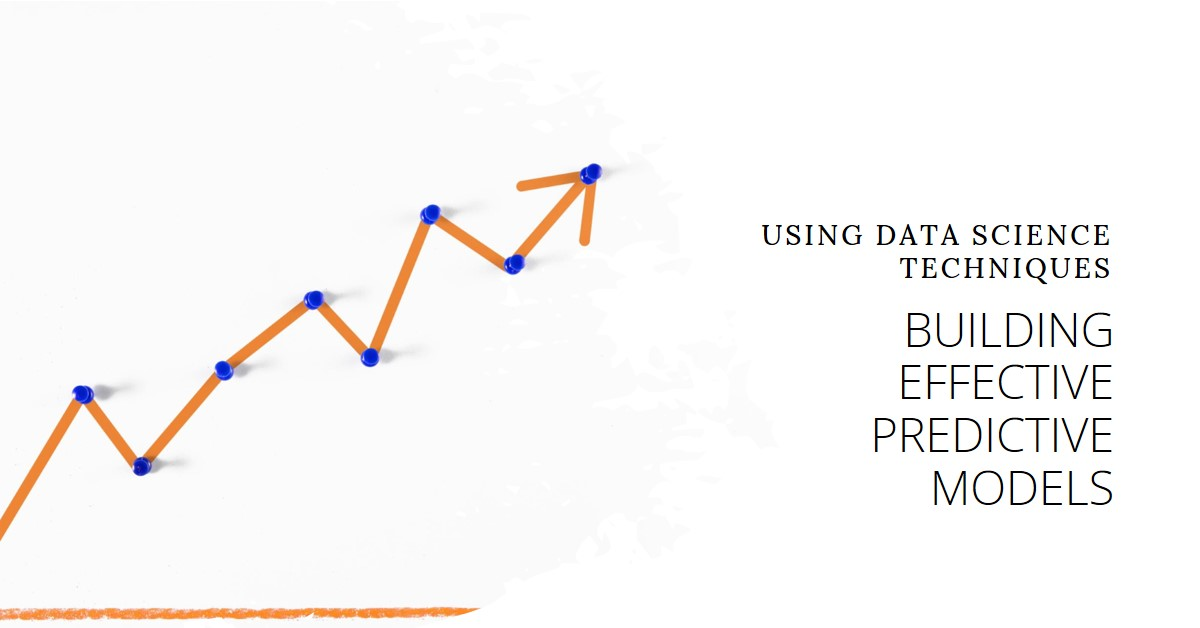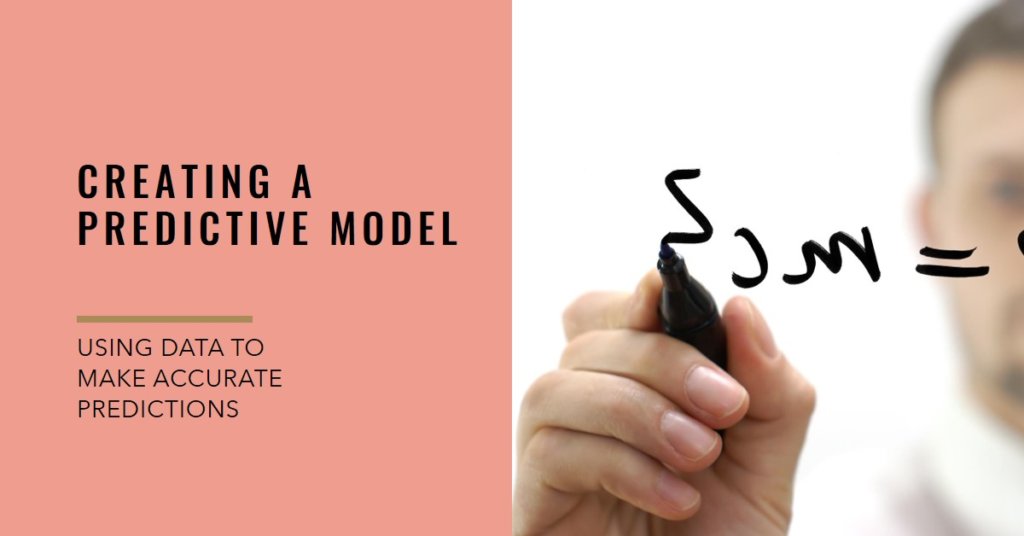
How to Build an Effective Predictive Model Using Data Science Techniques
Predictive modeling is a crucial aspect of data science, allowing businesses and researchers to make informed decisions based on data-driven insights. In this article, we’ll explore the key steps and techniques involved in building an effective predictive model.
I. Introduction
A. Definition of Predictive Modeling
Predictive modeling involves using statistical algorithms and machine learning techniques to predict future outcomes based on historical data. It plays a pivotal role in various industries, guiding decision-makers by providing valuable insights.
B. Importance of Predictive Modeling in Data Science
Data science relies heavily on predictive modeling to extract meaningful patterns from large datasets. It enables organizations to anticipate trends, make accurate forecasts, and optimize their decision-making processes.
II. Understanding Data Science Techniques
A. Overview of Data Science
Data science encompasses a broad range of techniques for extracting knowledge and insights from structured and unstructured data. Predictive modeling is one of its core components, contributing to the predictive analytics landscape.
B. Role of Predictive Modeling in Data Science
Predictive modeling serves as a bridge between data analysis and actionable insights. It helps in uncovering hidden patterns, identifying relationships, and making predictions that aid in strategic planning.
III. Key Steps in Building Predictive Models
A. Data Collection and Preprocessing
The foundation of any predictive model lies in the quality of the data. This step involves gathering relevant data and cleaning it to ensure accuracy and completeness.
B. Exploratory Data Analysis (EDA)
EDA involves visually and statistically exploring the dataset to understand its characteristics, uncover potential trends, and identify outliers that may impact the model.
C. Feature Selection
Selecting the right features or variables is crucial for model performance. This step involves choosing the most relevant data attributes that contribute significantly to the prediction.
D. Model Selection
Choosing the appropriate algorithm depends on the nature of the problem. Linear regression, decision trees, and neural networks are among the popular choices.
E. Training the Model
Once the model is selected, it needs to be trained on historical data to learn patterns and relationships between variables.
F. Model Evaluation
Evaluation metrics such as accuracy, precision, and recall are used to assess how well the model performs on new, unseen data.
G. Fine-tuning for Performance
Iterative refinement is necessary to improve model accuracy. This involves adjusting parameters and features to enhance predictive capabilities.
IV. Popular Data Science Techniques for Predictive Modeling
A. Linear Regression
Linear regression models the relationship between dependent and independent variables by fitting a linear equation to the observed data.
B. Decision Trees
Decision trees use a tree-like model of decisions and their possible consequences, making them easy to understand and interpret.
C. Random Forest
Random Forest combines multiple decision trees to improve accuracy and reduce overfitting.
D. Support Vector Machines
SVMs are used for classification and regression analysis, finding the optimal hyperplane to separate data points.
E. Neural Networks
Inspired by the human brain, neural networks consist of interconnected nodes that mimic learning patterns.
V. Best Practices for Effective Predictive Modeling
A. Handling Missing Data
Implement strategies like imputation or removal to address missing values without compromising model integrity.
B. Feature Scaling
Normalize data to ensure that all features contribute equally to the model, preventing bias towards certain variables.
C. Cross-Validation
Divide the dataset into multiple subsets for training and testing, enhancing the model’s robustness.
D. Interpretability of Models
Choose models that provide interpretable results, especially in industries where transparency is crucial.
VI. Challenges and Considerations
A. Overfitting
Guard against overfitting, where the model performs well on training data but fails to generalize to new data.
B. Bias and Fairness
Be mindful of biases in data that may result in unfair predictions, especially in applications like hiring or lending.
C. Model Interpretability Challenges
Complex models, such as neural networks, may lack interpretability, making it challenging to understand the reasoning behind predictions.
VII. Real-world Applications
A. Healthcare
Predictive modeling aids in disease prediction, patient outcome analysis, and resource allocation in healthcare.
B. Finance
In finance, models predict market trends, assess credit risk, and optimize investment portfolios.
C. Marketing
Marketers use predictive modeling for customer segmentation, targeting, and personalized marketing campaigns.

VIII. Case Study: Building a Predictive Model
A. Selecting a Business Problem
Choose a real-world problem relevant to your business, ensuring it aligns with organizational goals.
B. Data Acquisition
Gather diverse and comprehensive data related to the chosen problem, considering both historical and real-time sources.
C. Model Building and Evaluation
Follow the key steps outlined earlier, applying them to the specific problem. Evaluate the model’s performance and iterate for improvement.
IX. Future Trends in Predictive Modeling
A. Explainable AI
The demand for models that offer transparent and interpretable results is on the rise, leading to the development of explainable AI techniques.
B. Automated Machine Learning (AutoML)
AutoML streamlines the model-building process by automating tasks such as feature selection, hyperparameter tuning, and model evaluation.
C. Integration with Big Data Analytics
As the volume of data continues to grow, the integration of predictive modeling with big data analytics becomes essential for handling large and complex datasets.
X. Conclusion
A. Recap of Key Points
Effective predictive modeling involves a systematic approach, from data collection to model evaluation. It is a dynamic field with constant advancements.
B. Encouragement for Implementation
Encourage businesses and individuals to leverage predictive modeling for data-driven decision-making, emphasizing its transformative impact.
Frequently Asked Questions (FAQs)
Q: Can predictive modeling be applied to any industry?
- A: Yes, predictive modeling is versatile and can be applied across various industries, from healthcare to finance and marketing.
Q: What are the common challenges in building predictive models?
- A: Challenges include handling missing data, avoiding overfitting, addressing bias, and ensuring model interpretability.
Q: Are there user-friendly tools for building predictive models?
- A: Yes, several user-friendly tools and platforms, such as scikit-learn and TensorFlow, make predictive modeling accessible to a broader audience.
Q: How can businesses stay updated on the latest trends in predictive modeling?
- A: Regularly following reputable data science journals, attending conferences, and participating in online forums are effective ways to stay informed.
Q: What role does domain expertise play in effective predictive modeling?
- A: Domain expertise is crucial for understanding the nuances of the problem at hand, selecting relevant features, and interpreting model results accurately.
